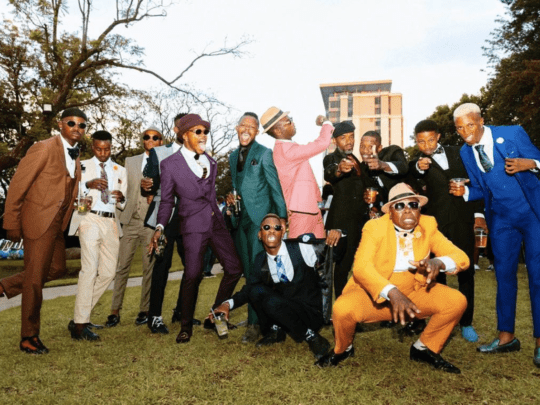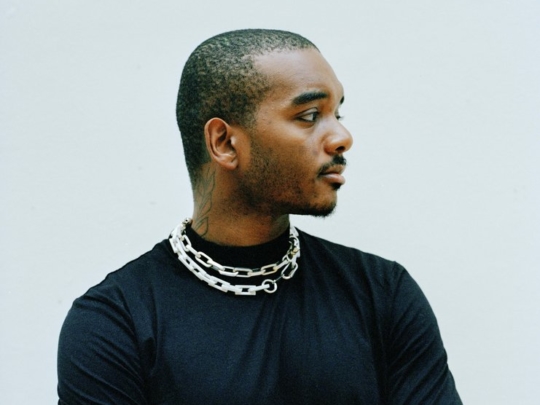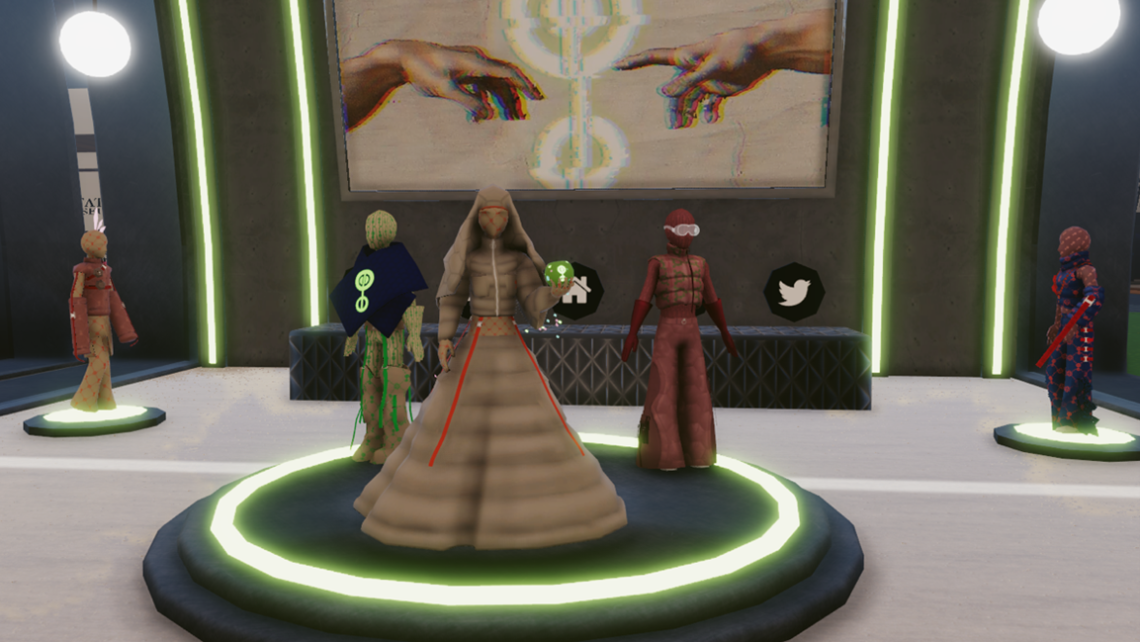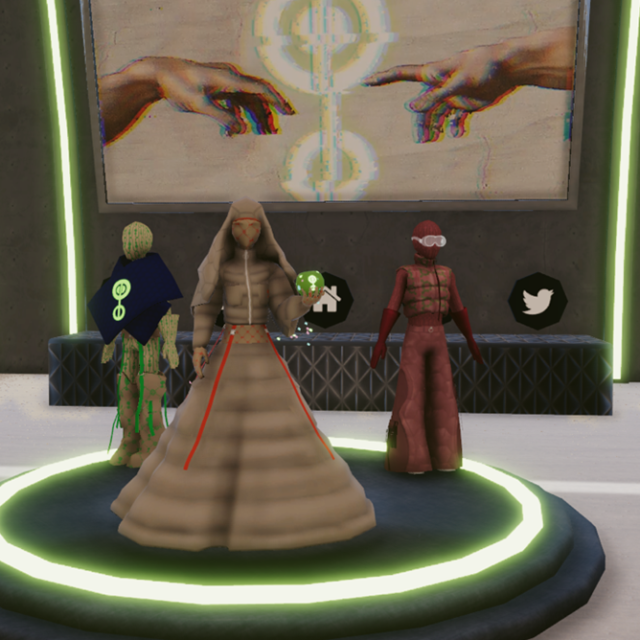The first Metaverse Fashion Week, staged March 24th to 27th, has prompted intense debate in fashion circles. Watchers of the web3 fashion space fell into one of two camps: the incredibly enthusiastic, who were excited by what they saw and recognized it as a giant leap forward for fashion, and those who were more sanguine, patiently trying to make sense of this new metaverse thing.
Hosted by Decentraland, a “decentralized virtual reality platform”, Metaverse Fashion Week was an engrossing flurry of virtual activity distinctly uninterested in answering questions beyond those that would help guests buy or sell virtual wares.
Refreshingly inclusive and apolitical vibes could be felt everywhere. In a real world beset by economic strife and military conflict, there was a sense of escapism for the fashion crowd in attendance. Perhaps a touch of escapism is exactly what we need in these trying times.
It’s easy to get lost in Decentraland, or DCL, as it’s typically known. That’s not because of its immersive graphics, but rather because of its daunting size. Wanting to avoid looking like a total idiot, I logged in early to get my bearings, but quickly realized that technological learning barriers weren’t going to be an issue. It seems the rumors were true: maybe the Metaverse could really be accessible to anyone with internet access.
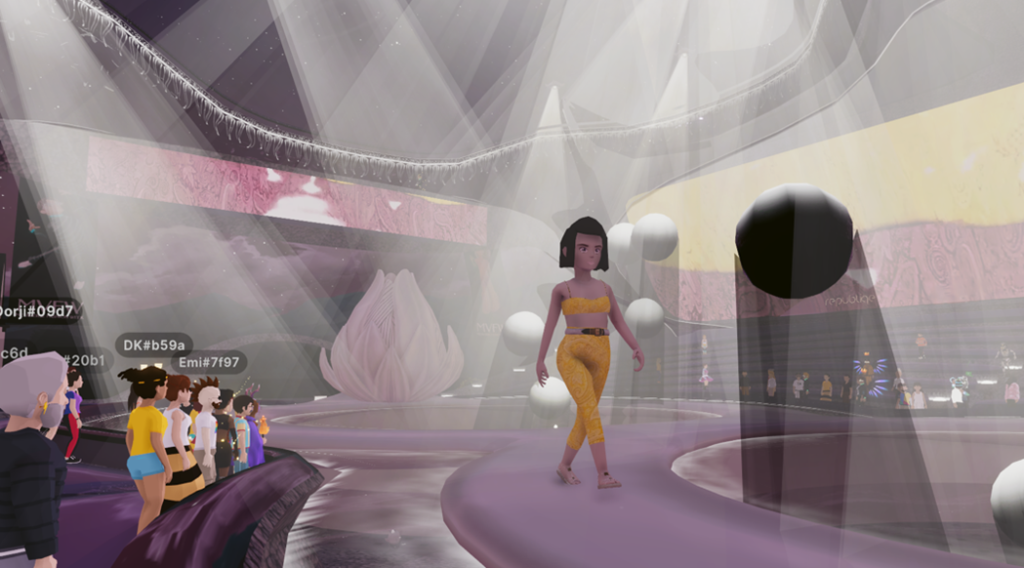
A two-piece ensemble from the Etro catwalk
I’ve spent way too many hours playing online open world games in my life, so I was more than a little disappointed by the appearance of the virtual environment. My avatar couldn’t actually do anything, other than walk around and chat with other users or click on virtual billboards, NFTs and links to a few Discord channels. A decentralized social platform managed and built by its users may sound cool, but in its current iteration Decentraland still feels like a sea of traversable ad space that needs to be purged of its crypto bro overlords.
Glitz, glamour and glitches
But let’s focus on the fashion. From day one, it was clear that all the avatars in attendance were here to check out the clothes – and the clothes only – and not to prance around virtual medieval towns or flush excrement-shaped NFTs down virtual toilets. (Yes – that’s something I wish I could unsee.)
And the clothes were great: they seemed to have magical powers, inspiring a feeling of hope for the fashion industry’s future, a sense many of us have not felt in a long time. New narratives and new ideas emerged among digital folds of garments, even if they seemed ripe for release from their clunky and awkward forms. This is not to insult the designers, just to recognize that the digital fashion industry and the technologies that support it are still in their infancy.

Party like it’s 2099: look closely to see CWETEK#5671 wearing head-to-toe Tribute Brand
IRL labels like Dolce & Gabbana, Phillip Plein and Etro hosted shows, to varying degrees of success, at a catwalk built in a stadium-style digital building that seemed to outshine the garments as they came down the runway. D&G showed futuristic suits and dresses worn by animals: think Fantastic Mr. Fox attends a session on intergalactic trade policy in the 23nd century. Etro’s collection of resortwear in classic paisley prints – presented here in DCL for the first time, but also available for purchase in physical form – were ill-suited to low-resolution graphics and the prevailing big impact ethos of MVFW.
In truth, the clothes shown by real-world labels in Metaverse Fashion Week were overshadowed by the new digital fashion houses. Three labels already well-established in the digital world stood out: Tribute Brand, Placebo, and Auroboros.
Tribute Brand, which describes itself as a “platform for contactless cyber fashion”, released a limited-edition collection of wearables “inspired by Tekken’s Devil Jin and GTA’s ladies of the night” at the first official MVFW afterparty. The party brought out the DCL fashion elite, who showed up dressed to impress in dazzling digital looks. Some were wearing the looks just dropped by Tribute, including a bikini top, a micro miniskirt, thigh-high boots with matching gloves and a hairstyle with devil horns. The hairstyle was on sale in the marketplace for around 600 MANA, the DCL’s digital currency and the equivalent of £1,200.

Placebo’s retail space in DCL: pulsing techno beats and uber-cool clothes
Digital fashion house Placebo has a permanent storefront in DCL. Its signature aesthetic (“ageless, sizeless, genderless tech-couture”) mixes cozy puffers with a slick, liquid-like cyber-latex “fabric” and muted all-over logo prints. The style fits perfectly with the fashion landscape of 2022 and feels like the future at the same time. As garments that can be photoshopped onto images – rather than the blocky wearables worn by avatars in DCL – their looks are so enticing, they made me wish they existed offline just so I could touch them.
Auroboros hosted the closing event of MVFW, promoted as an immersive concert experience, in collaboration with Grimes. The concert took place in the impressive Auroboros store, a towering spire with plenty of space to showcase intriguing nature-inspired garments. Highlights: gravity-defying spikes, shimmering stripes that pulse and slither around the body, and translucent layers that show the “veins” of other garments underneath.
Auroboros take full advantage of the fact that designing for the virtual world doesn’t need to be anchored in gravity or time, but it also makes physical garments that are deeply rooted in the natural world: bespoke couture designs literally grow on the bodies that wear them, undergoing a crystallization process that takes six to 12 hours. That might just be the coolest thing to happen since Hussein Chalayan’s garments started shapeshifting for his One Hundred & Eleven show of 2007.
So was Metaverse Fashion Week a success? The answer is complicated. Errors abounded, with shows starting late due to technical difficulties and a lack of cohesive communication from event organizers. As my avatar was strolling around DCL’s luxury district, which is sponsored by NFT marketplace UNXD, I picked up a disappointed comment: “Really? Is this supposed to be the future of fashion?”
I understand the frustration, but the creators behind Metaverse Fashion Week aren’t the ones to blame. Sometimes, the hype and obsessive marketing push behind the metaverse seems disproportionate to how much of it has already been built – which is essentially none of it. Metaverse Fashion Week was supposed to be about clothes, not a discussion on digital infrastructure, but it can be very difficult to separate the topics from each other at this early stage when everything is still an experiment.
An exchange between two partygoers at the closing-day event sums up my take:
“NGL this is disappointing!! No way this is supposed to be a historic moment. Grimes isn’t even playing live. And where are my free NFTs??!”
“Dude… please just shut up and enjoy the show.”

